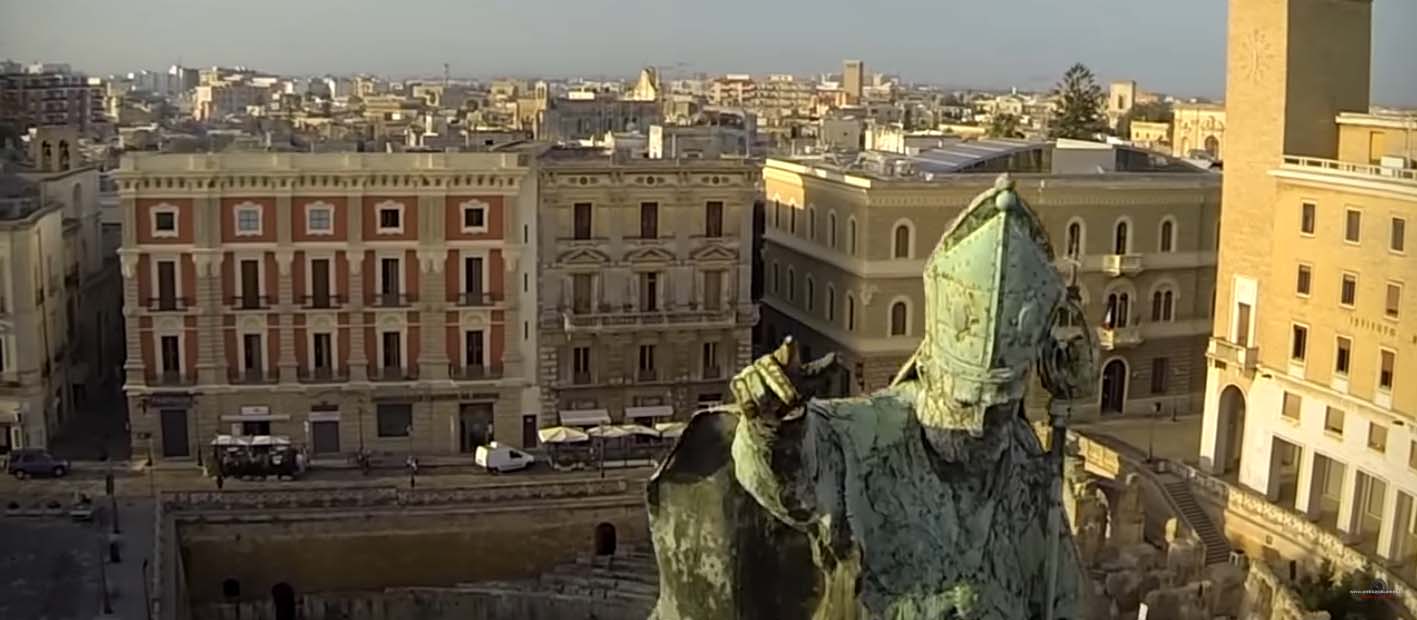This post is also available in:
 Italiano (Italian)
Italiano (Italian)
Lecce..A stunning city
Lecce is a beautiful city with many attractive places in Italy. Tourist visits Lecce for enjoying popular appealing city and sightseeing. Many top rate hotels are settled in the area with high demand.
Lecce in Italy has no dearth of things to see and do so you will leave all your tensions behind. Once voyagers travel to the City, they will be captivated by the numerous historical and architectural attractions. Don't' forget to end up your day with an excellent selection of local dishes at one of well-known restaurants. These are just some of great highlights luring holidaymakers to the stunning city of Lecce.
Some "pearls" to visit
Santa Croce - Not far from the main square, Piazza St. Oronzo, there are two wonderful examples of Baroque: the “Basilica of Santa Croce" and “Palazzo dei Celestini” (the Celesitnes were another religious order and had their Monastery just here). The two buildings date back to the 16th century. The style of the church is ebullient without exaggeration, the façade is wonderful, with a beautiful rose-window surrounded by angels. It was the work of Gabriele Riccardi, Cesare Penna and Giuseppe Zimbalo. The words are not enough to describe the beauty of Santa Croce, but you certainly will be fascinated in front of lions, dragons and angels which hold the balaustrade. When you go inside you will breathe an austere atmosphere (as you feel in the Classical basilica style), with its wooden ceiling and the smooth columns adorned by Corinthian capitals. The altars, in the side aisles, are pure Baroque and some of them show beautiful paintings.
Anfiteatro romano - The pearl of the square is the Roman Amphitheatre, appearantly built in the 1st or early 2nd century A.D., during the reign of Trajan. Then it remained covered for centuries until it was brought to light again in 1905 by the local scholar Cosimo De Giorgi during the works for the Bank of Italy. It shows the importance of Roman civilization and here hunting games or celebrations and feasts were held in the past. This is understood by the friezes around the podium; then you will see scenes of fighting bulls and exotic animals (elephants, lions, panthers and wolves), Roman inscriptions, sculptures and even a statue of Athena attributed to the Athenian sculptor Alcmene (which nowadays is kept in the Provincial Museum). The amphitheatre, recalling those built by the Romans, was dug out of a limestone deposit, with the addition of “pietra leccese”. Probably there was another level of seats above the top row that we see today, probably with columns and pillars. The entrance is next to the bank and a staircase takes you down during summer performances. Here now there is an empty stone on which in the past there was a bronze eagle: it held a parchment (sculpted in bronze too) bearing lyrics composed by Quinto Ennio; but the eagle was sacrified during the Second World War because its bronze was used to make guns. During the excavations, they found a small Greco-Messapian burial chamber (a hypogeum) with stone inscriptions which are now exhibited in the Archeaeological Museum: they were written in a language that has not been deciphered yet.
Piazza Duomo - At the end of Via Palmieri, Piazzza Duomo is in front of you with the Bell-Tower, the Cathedral, the Bishop’s palace and the old Seminary. The square has a peculiarity: it is a rare example of closed square in Italy. In the past, in fact, at the entrance (where there are two twin buildings) there was a wooden gate; this gate was closed every evening just to keep religious life apart from ordinary life.
The façade of the Cathedral was built in the second half of the 17th century for Bishop Pappacoda (whose sepulchral monument is inside the church) to enlarge the old church, while the main entrance is on the side, next to the Bishop’s palace. In fact the old façade is not so richly decorated and lacks of solemnity, it is more composed and almost austere. The architect who enlarged the church was Giuseppe Zimbalo.
Inside the Cathedral there are paintings by Oronzo Tiso, representing the “Virgin” (to whom the church is dedicated) and other Biblical stories. It is rich of altars, both in Baroque style and a simpler style.


